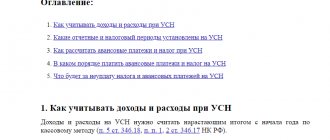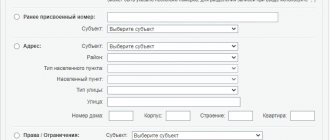Introductory information
To begin with, let us remind you that the property tax for individuals still exists.
Issues of its calculation and payment are regulated by the Law of the Russian Federation dated December 9, 1991 No. 2003-1 “On taxes on property of individuals” (hereinafter referred to as Law No. 2003-1). This tax is levied on real estate that is owned by individuals (for example, apartments, residential buildings and dachas). The tax base for calculating this tax is determined based on the inventory value of the property (clause 2 of article 5 of Law 2003-1). However, from January 1, 2015, Law No. 2003-1 is repealed, and a new chapter of the Tax Code “Property Tax for Individuals” comes into effect. One of the main changes introduced by the new chapter of the Tax Code of the Russian Federation will be the transition to calculating property taxes not from inventory, but from cadastral value.
The cadastral value, as a rule, is as close as possible to the market value of the property (since when establishing it, for example, the real estate segment, location, area and year of construction are taken into account). The inventory value may be significantly lower than the market price. Therefore, the tax calculated based on the cadastral value will in most cases be higher.
Note
Previously, it was planned to introduce a unified tax on real estate of individuals (buildings and land plots), which was also planned to be calculated from the cadastral value.
The Rosreestr website will help you find out the cadastral value of the required property. To do this, you can use the service “Reference information on real estate online” (https://rosreestr.ru/wps/portal/online_request), where you indicate the cadastral number or address of your apartment in the request form. Unfortunately, at the moment, this service does not work very correctly, so to determine the cadastral value of the required property, we recommend using the “State cadastral registration of real estate” section of the Rosreestr portal (https://rosreestr.ru/wps/portal/cc_ib_general_inf). Applications and documents for state cadastral registration of a real estate property can be provided by applicants in person at the places of reception of applicants of a territorial body or a multifunctional center for the provision of state or municipal services (MFC) at the location of the real estate property within the cadastral district, by mail to the postal address for reception applications and documents, as well as in the form of electronic documents using the Internet, including a single portal of state and municipal services.
Tax inspectors will calculate the tax
Property tax is a local tax that will be regulated not only by the Tax Code of the Russian Federation, but also by regulatory legal acts of representative bodies of municipalities and cities of federal significance (Moscow, St. Petersburg and Sevastopol). Local tax officials will calculate the amount of tax and send payment notices to property owners. Since such questions sometimes arise, we immediately note: there is no analogy with personal income tax here; accordingly, neither property owners nor the accounting department at the owner’s place of work will have to calculate the tax.
The tax will be introduced by the constituent entities of the Russian Federation
To introduce a tax, each subject of the Russian Federation will have to: 1) determine the procedure for determining the cadastral value of property; 2) establish a single date from which in the territory of a constituent entity of the Russian Federation the tax base for the tax will be determined based on the cadastral value.
Until these procedures are implemented, the current procedure will be applied to calculate the tax. That is, the tax will be calculated based on the inventory value of the property (Article 402 of the Tax Code of the Russian Federation).
It should be taken into account that the constituent entities of the Russian Federation have the right to introduce a new procedure for calculating tax as early as January 1, 2015. However, to do this, they must adopt and publish the relevant regional law no later than December 1, 2014.
INSURANCE CONTRIBUTIONS TO OFF-BUDGETARY FUNDS
Reporting deadlines
Now, from January 1, 2015, the deadlines depend on the method of reporting:
- in the Pension Fund of the Russian Federation - no later than the 15th day of the second month following the reporting period, if the calculation is presented “on paper”; no later than the 20th day of the second month following the reporting period, if electronic reporting is submitted;
- in the Federal Social Insurance Fund of the Russian Federation - “on paper” no later than the 20th day of the month following the reporting period, in electronic form - no later than the 25th day of the month following the reporting period.
Electronic reporting
Employers who employ more than 25 people must report via the Internet (Part 10, Article 15 of Law No. 212-FZ of July 24, 2009). This also applies to reporting for 2014.
Rounding
Insurance premiums to be transferred do not need to be rounded to whole rubles (Part 7, Article 15 of Law No. 212-FZ of July 24, 2009). This also applies to contributions transferred in January 2015 for 2014.
Settlement
From 2015, overpayments for one type of contribution can be used to pay off debt of another type, provided that these contributions are administered by one fund.
Contributions of individual entrepreneurs
Their size will increase due to the increase in the minimum wage. Its amount since January 1, 2015 is 5965 rubles.
Accrual of penalties
Penalties are accrued for each day of delay, including the day of repayment of the arrears (Part 3 of Article 25 of the Law of July 24, 2009 No. 212-FZ).
Insured persons
From January 1, 2015, insurance contributions to the Federal Social Insurance Fund of the Russian Federation at a rate of 1.8 percent are charged for payments to foreigners who are temporarily staying in the Russian Federation. Now they have the right to temporary disability benefits (except for maternity leave) if they pay insurance premiums for them for at least six months preceding the month of the insured event.
Persons temporarily staying in the territory of the Russian Federation are recognized as insured persons under compulsory pension insurance (with the exception of highly qualified specialists). Payments in their favor are subject to pension contributions, regardless of the duration of the employment relationship.
Limit base for calculating contributions
From 2015, the bases for calculating insurance contributions to the Pension Fund and the Social Insurance Fund of the Russian Federation will be different and will be:
- in the Pension Fund of Russia - 711,000 rubles;
- to the Federal Social Insurance Fund of the Russian Federation (contributions in case of temporary disability and in connection with maternity) - 670,000 rubles.
Insurance contributions to the Pension Fund for amounts exceeding 711,000 rubles must be calculated at a rate of 10 percent.
Insurance contributions to the FFOMS are paid on all payments to employees. The maximum base for calculating insurance premiums for compulsory health insurance has been abolished.
Preferential rates
Pharmacy organizations operating on UTII have the right to apply reduced insurance premium rates only to persons who have the right to engage in pharmaceutical activities (clause 10, clause 1, article 58 of Law No. 212-FZ, clause 4, article 33 of Law No. 167-FZ ). The benefit does not apply to the company as a whole.
Non-contributory payments
Contributions to compensate for the cost of travel on vacation abroad are exempt only from the employees of organizations in the Far North. Costs for their family members are subject to insurance premiums (Clause 7, Article 9 of Law No. 212-FZ).
Also, amounts associated with the dismissal of employees are not subject to insurance premiums, regardless of the grounds for dismissal (except for compensation for unused vacation). These are severance pay, compensation, average monthly earnings for the period of employment, but subject to a limit on the amount - within three or six times (for the Far North) the average monthly salary. Amounts exceeding the maximum amounts paid are subject to insurance premiums in accordance with the general procedure.
| New in 2015 → If you have any doubts about whether certain payments are subject to contributions, read in Berator The material is open for free viewing. |
"Children's" benefits
From January 1, 2015, the following benefits were indexed by 5.5% and their amounts became as follows:
- allowance for registration in the early stages of pregnancy - 543.67 rubles;
- one-time benefit for the birth of a child - 14,497.80 rubles;
- The minimum monthly allowance for child care up to 1.5 years is 2,718.34 rubles. (for the first child), RUB 5,436.67. (for the second and subsequent children).
What property will be taxed?
Tax will be charged on the property listed below (Article 401 of the Tax Code of the Russian Federation):
- House;
- living space (apartment, room);
- garage, parking place;
- single real estate complex;
- unfinished construction project;
- other building, structure, structure, premises.
At the same time, the legislator established that residential buildings that are located on land plots provided for personal subsidiary plots, dacha farming, vegetable gardening, horticulture, and individual housing construction will be classified as residential buildings.
For comparison, we note that the current list of taxation objects does not mention, for example, parking spaces, unfinished construction projects and unified real estate complexes (Article 2 of Law No. 2003-1). That is, the list of taxable objects has been expanded.
Tax base and tax deductions
The tax base for the tax will be determined in relation to each property as its cadastral value indicated in the state real estate cadastre. However, the new chapter of the Tax Code of the Russian Federation provides for tax deductions. In essence, they represent the values by which the cadastral value of the property is reduced (Article 403 of the Tax Code of the Russian Federation). We have summarized these values in the table.
Reduction of cadastral value when calculating the tax base (tax deductions)
| Property | Reduction of cadastral value |
| Apartment | Decreased by the cadastral value of 20 sq. meters of the total area of this apartment. |
| Room | Decreased by the cadastral value of 10 square meters. meters of area of this room. |
| House | Decreased by the cadastral value of 50 square meters. meters of the total area of this residential building. |
| A single real estate complex, which includes at least one residential premises (residential building) | Decreased by one million rubles. |
Example Let's assume that the cadastral value of an apartment is 3,330,000 rubles. The cadastral value per square meter of this apartment is 58,421 rubles. In this case, the tax deduction amount will be 1,168,420 rubles. (RUB 58,421 × 20). As a result, the tax base will be equal to RUB 2,161,580. (RUB 3,330,000 – RUB 1,168,420).
We would like to add that the amount of designated tax deductions may be increased by local authorities. As a result of increasing deductions, the tax base may even take a zero value.
Along with the application you must submit:
— an identification document of the applicant, if the application is submitted by the applicant, or an identification document of the applicant’s representative, if the application is submitted by his representative;
— a document confirming the relevant powers of the applicant’s representative (if the application is submitted by the applicant’s representative);
— document of title to the property (certificate of ownership);
- other documents. It should be noted that the draft Administrative Regulations of the Federal Service for State Registration, Cadastre and Cartography for the provision of public services for state registration of rights to real estate and transactions with it and state cadastral registration of real estate is currently under development.
Payment for the provision of information entered into the State Real Estate Cadastre (GKN) must be made no later than one month from the date of submission of the request. The amount of the fee depends on the type and method of information provided, as well as the category of the applicant. For example, for individuals, a cadastral extract of a property issued in the form of a paper document costs 400 rubles per copy.
To pay the tax for a specific year, it will be necessary to use the cadastral value of the property as of January 1 of the year that is the tax period, that is, when paying the tax for 2015, we take the cadastral value as of January 1, 2015. If a property is registered during the tax period, then the cadastral value is taken on the day of registration with the state cadastral register.
Tax rates
The new Article 406 of the Tax Code of the Russian Federation determines tax rates for property tax, which is calculated based on the cadastral value:
- up to 0.1% - for residential buildings and residential premises, unfinished residential buildings, garages and parking spaces;
- up to 2% - for administrative, business and shopping centers, as well as non-residential premises that are used to house offices, retail facilities, public catering and consumer services, as well as facilities whose cadastral value exceeds 300 million rubles;
- up to 0.5% - for other taxable items.
Example If the cadastral value of an apartment is 3,330,000 rubles, the cadastral value of a square meter of this apartment is 58,421 rubles, and the tax base after using the deduction is 2,161,580 rubles, the amount of tax payable will be 2,161.58 rubles. (RUB 2,161,580 × 0.1%).
At the same time, municipalities have the right to change the 0.1% rate established for apartments, houses and garages. Local authorities can increase this rate, but not more than three times, or reduce it to zero.
It is also allowed to establish differentiated rates depending on:
- cadastral or total inventory value of the object;
- type of object;
- its location;
- types of territorial zones within the boundaries of which the taxable object is located.
Property tax since 2014
We have already written more than once that the authorities have declared control over the illegal rental of real estate one of their priorities. At stake is an increase in tax collection and the elimination of the “black market” for illegal paid registration of citizens. Restrictions on rented meters of housing, responsibility for fictitious registration of citizens, joint work of various government agencies to identify apartments for rent - all these measures are already being taken at the legislative and practical level. However, speaking about tax collection, the authorities apparently do not count too much on promptly receiving all the information about the actual meters being rented. In connection with this, an unexpected move was made that made it possible to rely on the available fairly accurate information about the owners of real estate and the number of square meters belonging to them. Simply put, government agencies plan to influence owners who own more than one apartment (room, house). And indirectly impose higher taxes on their supposed “extra income” from renting out these surpluses. That is, the tax can be considered aimed at the owners of “investment” apartments that were purchased for subsequent rental. At the end of 2012, the bill on “Real Estate Tax” , which will combine the separate taxes on property and land that exist today. Its essence is as follows: from 2014, real estate objects are expected to be subject to a tax calculated as a percentage of the cadastral value of real estate, which is as close as possible to the real commercial value of these objects. Let us remind you that at the moment taxes are calculated on the basis of the inventory value, which was included during construction back in the 1980s, and which is greatly underestimated. According to the draft law, residential premises (for example, apartments) are expected to be taxed at a rate of 0.1% of the cadastral value, and non-residential premises at a rate of 0.5%. Recently, the Federal Tax Service completed a study on the impact of the new calculation procedure on tax collection. The results were impressive: the tax burden on the owner of one apartment will double, and for the owner of several apartments it can increase up to 6 times. The cadastral value of 1 square meter of real estate differs radically depending on the region. In Moscow it is, of course, the highest:
- 165 thousand 589 rub. for apartments,
- 109 thousand 98 rub. for houses and
- 92 thousand 714 rub. for non-residential premises.
deductions when calculating tax , allowing to “soften the blow” for low-income families who own a single apartment and live in it. The first 20 square meters for each owner (and 50 meters for beneficiaries) will not be taxed at all. Thus, a family of three, whose shared ownership is a typical two-room apartment of 55 square meters, will not pay tax at all. But a person who owns the same apartment in Moscow alone will have to pay 5,600 rubles. in year. And if he owns, for example, three apartments with a total area of 200 sq. m, he will have to give the state 28 thousand 800 rubles. in year. (source of information: Vedomosti dated January 25, 2013 https://www.vedomosti.ru/realty/news/8383991/nedvizhimost_poluchila_ocenku) Rates for the new real estate tax, on behalf of the President, must be approved by June. Theoretically, they can still change before then. Follow this link to read all the news on the new property tax.
In order not to miss important news for landlords, subscribe to our
e-mail newsletter or add us to your news feed via social networks! Facebook: https://www.facebook.com/moskvarenta Vkontakte: https://vk.com/moskvarenta Odnoklassniki: https://www.odnoklassniki.ru/group/51562092691589
Tax benefits
The legislator retained tax benefits for property tax for individuals (Article 407 of the Tax Code of the Russian Federation, Article 4 of Law No. 2003-1). Thus, as before, pensioners, disabled people of groups I and II, as well as disabled people since childhood will not pay property tax. Please note that the tax benefit is provided in relation to one taxable item of each type at the choice of the taxpayer. To receive the benefit, you will need to notify the tax authority before November 1 about the objects in respect of which the tax benefit will be applied. If the owner does not send such a notification to the inspectorate, then a tax benefit will be provided for the object with the maximum tax amount.
Procedure for calculating the tax amount
The tax amount is calculated by the tax authorities at the end of the tax period separately for each taxable object as a percentage of the tax base corresponding to the tax rate (Part 1 of Article 408 of the Tax Code of the Russian Federation) on the basis of data transmitted by the authorities carrying out cadastral registration, maintaining the state real estate cadastre and state registration rights to real estate and transactions with it within 10 days from the date of corresponding registration, as well as annually until March 1 as of January 1 of the current year (Part 4 of Article 85 of the Tax Code of the Russian Federation).
The tax payment deadline has not changed and the tax is still payable by taxpayers no later than October 1 of the year following the expired tax period (Article 409 of the Tax Code of the Russian Federation).
Existing tax benefits are also preserved, however, they are provided only for one object of each type (at the taxpayer’s choice) and do not apply to objects that are used in business activities, non-residential premises and objects worth more than 300 million rubles.
An innovation in property tax is the introduction of deductions - meters that will not be taxed. For an apartment, the deduction is 20 sq. m, rooms - 10 sq. m, residential building - 50 sq. m. Local authorities are given the right to increase the amount of these deductions.
Rules for calculating tax in the first 4 years and other transitional provisions
It has been established that starting from January 1, 2021, the tax base for property tax for individuals will be calculated throughout the Russian Federation only on the basis of cadastral value. The legislator also introduced a rule that should prevent a sharp increase in the tax burden.
If the amount of tax calculated “in the new way” turns out to be higher than the amount of tax calculated “in the old way”, then in the first four years after the introduction of new rules in the region, the tax will be calculated according to the following formula:
H = (H1 - H2) x K + H2
N - amount of tax to be paid; N1 - the amount of tax calculated “in a new way” (that is, from the cadastral value); N2 - the amount of tax calculated “in the old way” (that is, from the inventory value); K - reduction factor. The coefficient will be:
- 0.2 - first year;
- 0.4 - second year;
- 0.6 - third year;
- 0.8 - fourth year.
In the fifth year, after a new calculation procedure is introduced in the region, the tax will be calculated as described in the examples above.







